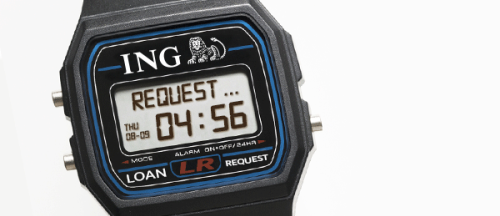How Romania created the five-minute loan
10 October 2016
Walking in a bank branch and leaving with a loan after a few minutes. Thanks to advanced data analytics, Romania takes the instant loan to the next level. Here’s how they did it.

Thanks to advanced data analytics, ING Romania streamlined the instant loan process.
Romania is a country that is bucking the weak growth trend in Europe. There’s no denying the facts: retail sales are surging, while the economy grew by 4.3 per cent compared to last year.
For ING – which set up its retail business from scratch in the country in 2004, but now has already expanded its network over to 150 retail branches – it’s proving to be very fertile ground, particularly when it comes to personal loans.
Over the last two years it has outperformed the market by a factor of 2.5 and doubled its market in share in consumer loans, thanks primarily to the launch and high efficiency of its instant ‘five-minute’ loans scheme, the envy of many other ING operations.
But how has it pulled it off?
A perfect storm
Nicoleta Alexandru, who heads up Romania’s Credit Risk Management team and was involved in setting up the Bank’s retail portfolio in Romania, puts her team’s success down to a multitude of factors.
“Starting a business from scratch was a real challenge but also a big advantage,” she says.
“It meant that we did not need to get rid of laborious processes or integrate different systems, but we could grow our portfolio and market share the way we envisaged it, as straightforward as possible – within the existing regulations and limitations of the Romanian market of course.”
ING Romania has offered consumers credit products from the very start: first mortgages and simple credit line products, followed by personal loans and credit cards. The breakthrough came in 2015 when ANAF, Romania’s fiscal authority, allowed banks direct access its database and to client details.
In one fell swoop, the bank had what it wanted: a reliable independent source of information on prospective and existing customers and a fully-automated and dedicated loan application process.
It only needed the ANAF data to be incorporated to create a fully automated process, enabling the bank to create a watertight and sector-leading ultra-fast application process – including a thorough solvency check.
“It takes clients only a few minutes from walking into a branch to having their request processed and receiving the money into their accounts,” she said.
Add other factors which are particular to present-day Romania to the brew such as a buoyant economy, a massive 19 percent rise in the minimum wage and a six-percent rise in consumer spending, and it’s little wonder that the instant loan scheme has become a runaway success.
Going for top-three
Roxana Cristea, who is head of Romania’s Lending Business Area, says ING is leading the Romanian retail banking sector in technological expertise.
With a new application scorecard for the instant loan scheme, a digital scorecard for online loan applications by existing customers, as well as a new income detection algorithm all in the pipeline – courtesy of the International Advanced Analytics team in Amsterdam - Romania is certainly not standing still.
“Clearly, with our advantageous net interest margin, the Instant Loan project is not about margins, but about serving clients who expect a fast service,” said Cristea.
“This is a defining feature of our service and will allow us to further strengthen our position in the market. We're ready to challenge for a place in Romania's top-three banks.”
